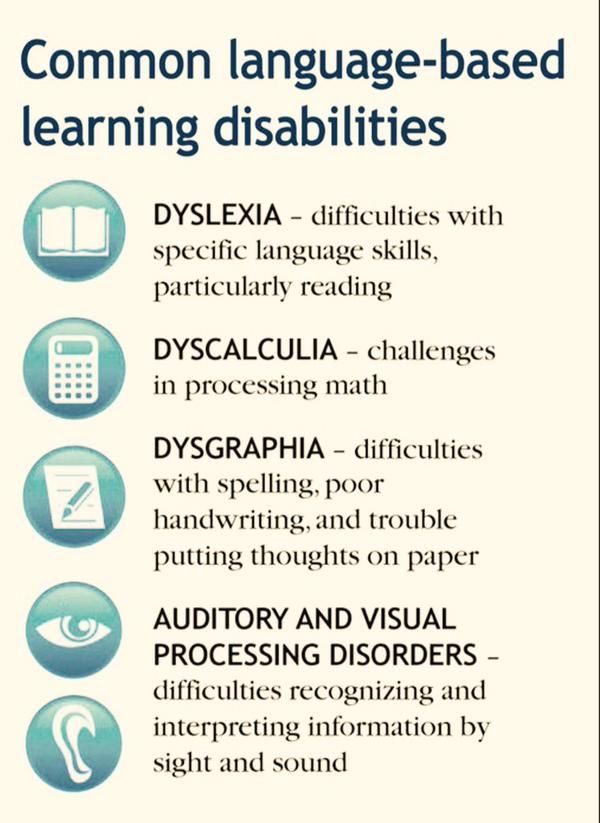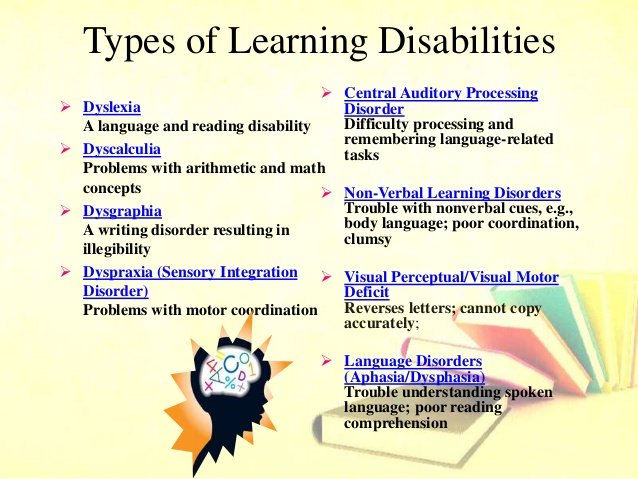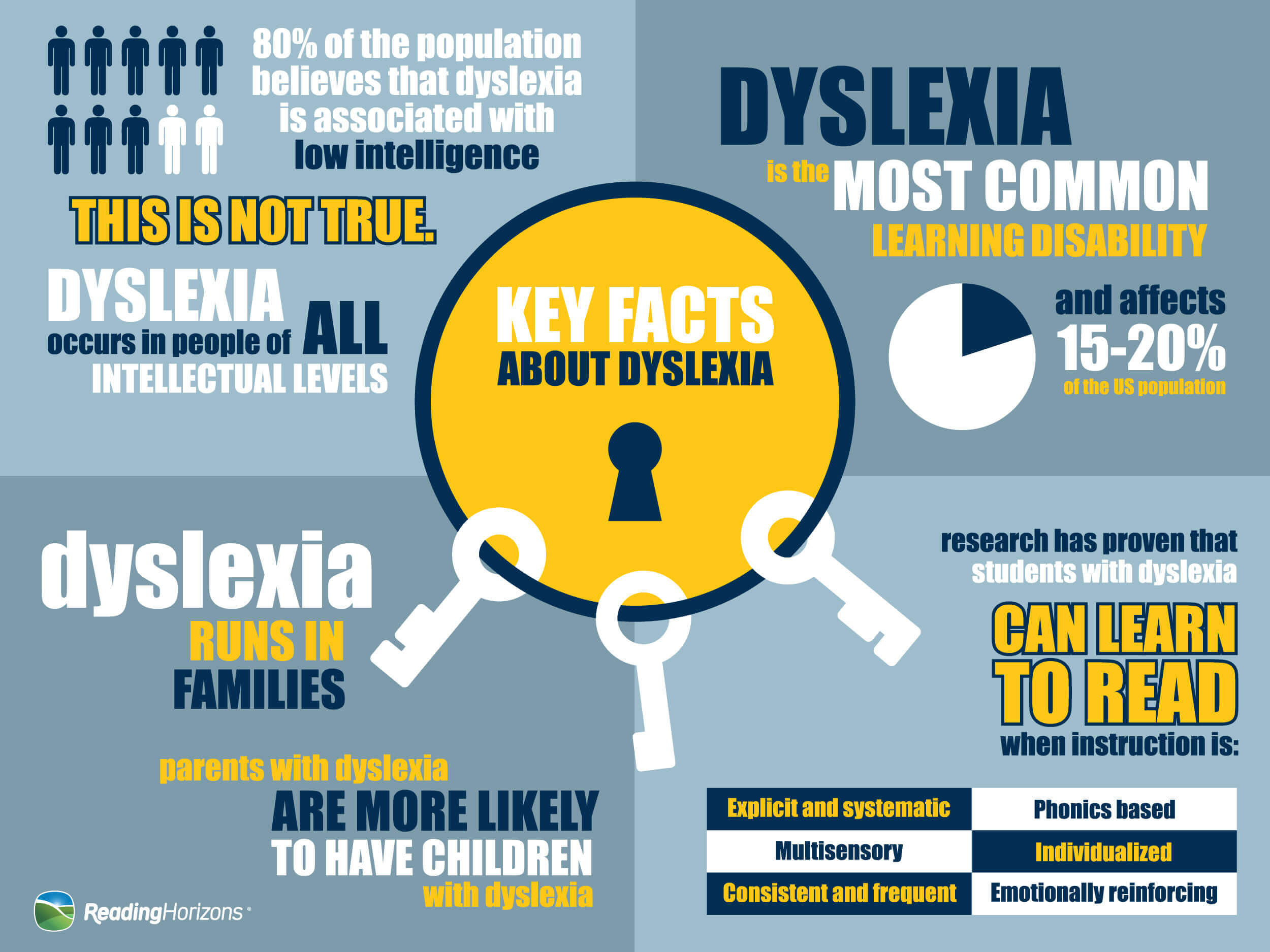Problems With Reading And Writing
Dyslexia is a learning disorder characterized by difficulty reading. Dysgraphia is a learning disability that affects a students writing abilities. Dyspraxia manifests itself through high levels of motor activity and excitability and poor coordination. Both ADHD and dyspraxia can prevent children from reaching their full potential, not just in the area of reading and writing but across a full spectrum of activities.
Both dyslexia and dysgraphia belong to a group of neurologically-based specific learning disabilities . SLD also includes dyspraxia, a development co-ordination disorder that affects coordination. Then there is dyscalculia: struggles with numbers and math. a wide-range of learning disabilities might have a SLD diagnosis.
Dyslexia and Dysgraphia: Those who struggles with these SLDs show generalized problems with learning to read and/or write. Symptoms include:
- Problems tracking from left;to right across a page
- Trouble sounding out words
- Problems understanding words or concepts
- Problems with scanning a sentence or paragraph to find a specific letter or word
- Poor or illegible handwriting; mix-ups in the sequencing of letters and improperly formed letters
- Repetitions, transpositions,;additions, substitutions, and omissions of letters and/or words
Dyslexia And Specific Learning Disorders: New International Diagnostic Criteria
Donatella Rita Petretto* and Carmelo Masala
Department of Education, Psychology, Philosophy University of Cagliari, Cagliari, Italy
- *Corresponding Author:
- E-mail:
Received Date: September 09, 2017; Accepted Date: October 13, 2017; October 19, 2017
Citation: Petretto DR, Masala C Fine Motor Functioning and Perception in Children with Tourette Syndrome. J Child Dev Disord. 3:19. doi: 10.4172/2472-1786.100056
Visit for more related articles at
Specific Learning Disabilities Are Plural: Not All Language
Learn about the results of genetic and brain imaging studies that show that Dysgraphia, Dyslexia, and OWL LD differ in their biological bases and become familiar with educational outcomes research. Gain a deeper understanding of why there needs to be more attention to specialized instruction tailored to the diagnosis and the writing problems students with specific kinds of language-based SLDs experience, and what that instruction may look like based on differential diagnosis of dysgraphia, dyslexia, and OWL LD.
Includes access to the recorded webinar for one person and Certification Maintenance Hours Administration Fee.;
You might also be interested in this related webinar from Dr. Berninger: Evidence-based Writing Instruction: Evidence-based Instruction for Low Achieving Writers Aimed at Multi-Level Writing Systems
- Learning Objectives
- Benefits of Attending
Delivery
Don’t Miss: Can You Get Social Security Disability For Spinal Stenosis
What To Do If You Notice Signs Of A Specific Learning Disability
-
Take Notes
If your child struggles with listening, speaking, reading, writing, spelling, or math, take note of the specific issues you see. The more information you have when talking to a specialist, the better.
-
Talk to Your Childs Teacher
With your list of observations in hand, make an appointment to speak with your childs teacher. Bring up your concerns and ask whether he or she has noticed any issues in the classroom.
-
Request an Evaluation
To find out whether these issues are related to a specific learning disability, youll need a full educational evaluation, including reading, language, writing, and math tests. Talk to your childs teacher to see if he or she may qualify for testing through the public school district. You can also set up testing with a private evaluator.
-
Be Proactive and Trust Your Gut
The sooner your childs learning issue is identified, the sooner you can arrange for the proper interventions. As a parent, you know your child best, and its up to you to get the evaluation process in motion.
Difference Between Intellectual Disability And Learning Disability

Categorized under Disease,Health | Difference between Intellectual Disability and Learning Disability
Aetiologies of intellectual disability
Difference between Intellectual Disability and Learning Disability is well defined in science and psychology ; yet people often mistake one for the other.
Intellectual Disability is a Neurodevelopmental Disorder that affects ones social, academic, communication, and daily life functions. Until few years, Intellectual Disability was wrongly called Mental Retardation. However, with the advancement in the classification and taxonomy of disorders, the term Intellectual Disability was coined and is now used for people who have an intelligence level below average.
Learning Disability, on the other hand, is a condition which affects the different areas of learning and interferes with the academic achievements of the individual. It includes reading, writing, comprehending and organizing language and mathematics. Learning Disabilities were previously mistaken to be intellectual faults. But with increase in the medical and psycho-social advancements, it has been proved that just a low I.Q. level is not enough to indicate Learning Disability.
This statement can be justified by saying that world famous personalities like Albert Einstein and Walt Disney were victims of Learning Disability in their childhood. However, their future achievements are known to all; and show that they were intellectually above average.
Recommended Reading: How To Collect Disability In Nj
Types Of Specific Learning Disabilities
Specific learning disability is an umbrella term that can describe many different types of learning issues. An educational evaluation may show that your child has a specific learning disability in a certain subject area.
For example:
- A specific learning disability in reading, also known as dyslexia
- A;specific learning disability in writing, also known as dysgraphia
- A specific learning disability in mathematics, also known as dyscalculia
What Is The Difference Between Dyslexia And A Specific Learning Disability In Reading
What is the difference between dyslexia and a specific learning disability in reading? Are they the same or is the term based on regional terminology?
Specific learning disability is the official term used today for students with learning disabilities. Such disabilities might impact reading, writing, math, or other areas. Dyslexia is no longer an official term used under federal education law. This term was initially used to describe a language-based reading disability.
Also Check: How To Get 70 Percent Va Disability
Risk Of Getting The Wrong Diagnosis
Sometimes, other common conditions can look like specific learning disorder on the surface. These include sensory problems, anxiety and ADHD.
If a child has specific learning disorder but isnt diagnosed or treated, they can become very frustrated. This might cause them to have mood or behavior problems. These issues can be confused with other conditions including anxiety, depression, oppositional defiant disorder and ADHD.
Problems With Following Directions Coordination Restlessness And Balance
Dyspraxia: Dyspraxia impacts fine motor skills. It results when there is a disconnect between the signals the brain sends to coordinate the bodys muscles and the resulting physical movements. Some people include Attention Deficit Disorder and Hyperactivity Disorder in with Dyspraxia, but technically, they are different. However, well include ADHD here, because it can cause learning disabilities that arise from an inability to focus and manage the impulse to move.
- Very high levels of motor activity
- High levels of excitability, perhaps accompanied with limited concentration
- Poor coordination and clumsiness; repeated bumping into objects and/or falling over
- Poor fine motor skills
- Slow response to verbal instructions
- Sensitivity to sensory stimulation (high noise levels, aversion to certain types of clothing, tactile sensitivity
Recommended Reading: Why Is There A 5 Month Waiting Period For Disability
What Is ‘specific Learning Disorder’ And Is It The Same As ‘dyslexia’
Psychologists, teachers, clinicians, and researchers use different terms to describe reading problems, which can be very confusing. ;In psycho-educational assessments, private psychologists often use the terms “specific learning disorder” or “specific learning disorder with impairment;in reading, or writing“, which is characterized as;one where people have difficulties with word reading accuracy, reading rate or fluency and reading comprehension , 5thEdition, 2013, The American Psychiatric Association).
Specific Learning Disabilities Is A General Term Used To Describe A Range Of Unexpected Learning Difficulties That Are Significantly Interfering With An Individual’s Academic Or Work Performance Or Other Activities Of Daily Life
People with SLD may struggle with listening, thinking, speaking, reading, hand-writing, written language, spelling and/or maths.
Specific learning disabilities are NOT caused by:
- Intellectual disability
- Deficit in the sense organs
- Environmental and emotional deprivation
- Other disabilities
Dyslexia is the most commonly known specific learning disability but there are others that can have a dramatic impact on a persons capacity to learn. SPELD NZ also works with children and adults struggling with dysgraphia, dyscalculia, dyspraxia and ADHD.
You May Like: How To Change Va Disability Direct Deposit
What Kind Of Instructional Strategies Improve Spelling Of Children With Dysgraphia
If children have both handwriting and spelling problems, the kinds of handwriting instruction described earlier should be included along with the spelling instruction.
Are educators in public schools identifying children with dysgraphia and providing appropriate instruction in public schools?
In general, no. Although federal law specifies written expression as one of the areas in which students with learning disabilities may be affected, it does not clearly identify the transcription problems that are the causal factors in dysgraphiaimpaired handwriting and/or spellingfor impaired written expression of ideas. Some of the tests used to assess written expression are not scored for handwriting or spelling problems and mask the nature of the disability in dysgraphia. Content or ideas may not be impaired. All too often, the poor writing or failure to complete writing assignments in a timely fashion or at all is misattributed to lack of motivation, laziness, or other issues unrelated to the real culpritdysgraphia. Children who are twice exceptionalgifted and dysgraphicare especially under-diagnosed and underserved.
Teachers mistakenly assume that if a student is bright and cannot write it is because the student is not trying.
Types Of Learning Disabilities

Learning disabilities are due to genetic and/or neurobiological factors that alter brain functioning in a manner which affects one or more cognitive processes related to learning. These processing problems can interfere with learning basic skills such as reading, writing and/or math.; They can also interfere with higher level skills such as organization, time planning, abstract reasoning, long or short term memory and attention.; It is important to realize that learning disabilities can affect an individuals life beyond academics and can impact relationships with family, friends and in the workplace.
Since difficulties with reading, writing and/or math are recognizable problems during the school years, the signs and symptoms of learning disabilities are most often diagnosed during that time.; However, some individuals do not receive an evaluation until they are in post-secondary education or adults in the workforce.; Other individuals with learning disabilities may never receive an evaluation and go through life, never knowing why they have difficulties with academics and why they may be having problems in their jobs or in relationships with family and friends.
Learning disabilities should not be confused with learning problems which are primarily the result of visual, hearing, or motor handicaps; of intellectual disability; of emotional disturbance; or of environmental, cultural or economic disadvantages.
Don’t Miss: How To Get Short Term Disability Approved While Pregnant
Types Of Oral Reading & Comprehension Tests
Although the terms reading disability and dyslexia are often used interchangeably, they differ in meaning. A reading disability is part of a larger category known as “specific learning disability,” whereas dyslexia is a more specialized term for a particular type of specific learning disability in reading. Educational evaluations assess people for specific learning disabilities in reading and dyslexia.
What Is A Learning Disability Exactly
The learning disability is defined as any mental condition that prevents a person from acquiring the same amount of;knowledge as others in their age group.
Do you want to learn more about the different types of learning disabilities? Keep reading to find out the 5 most common learning disabilities special education and their symptoms.
Video: Common Learning Disabilities
Recommended Reading: How Much Can You Get From Social Security Disability
Are Sld And Dyslexia The Same Diagnosis
Question
My child has just been diagnosed with a Specific Learning Disability in reading. Does that mean he has Dyslexia?
;;;;;;;;;;; Jackie,;Indian Land, SC
the President of Literacy How and a Research Affiliate at Haskins Laboratories, which conducts basic research on spoken and written language.
The IDEA defines Specific Learning Disability as a disorder in one or more of the basic psychological processes involved in understanding or in using language, spoken or written, which may manifest itself in the imperfect ability to listen, think, speak, read, write, spell, or do mathematical calculations.
A child who is diagnosed with a Specific Learning Disability is not necessarily dyslexic; however, dyslexia is the most common SLD. Other SLDs include perceptual disabilities, brain injury, minimal brain dysfunction, and developmental aphasia.
If Your Child Has Dyslexia
The National Institute of Health defines dyslexia as a brain-based type of learning disability that specifically impairs a persons ability to read. These individuals typically read at levels significantly lower than expected despite having normal intelligence. Although the disorder varies from person to person, common characteristics among people with dyslexia are difficulty with phonological processing , spelling, and/or rapid visual-verbal responding. While dyslexia is neurobiological in origin, its diagnosis is not medical rather, it requires an educational evaluation.
Related Smart Kids Topics
National Organizations For People With Learning Disabilities:
- Bookshare;opens up the world of reading for people with low vision, a physical disability or learning disability. Their books are accessible, which means you can read their books many different ways. Schools and many organizations around the globe can access the books they need for school, work, career advancement, skill development and the simple love of reading in formats that work for them.
- bookshare.org
Don’t Miss: Is Having Cancer Considered A Disability
Attention Deficit Hyperactivity Disorder
Attention deficit hyperactivity disorder is a condition which affects parts of the brain which control attention, impulses and concentration. It can have an impact on school, peer relationships, self-esteem and family life without appropriate treatment.
The signs of ADHD are different in every person but they may include some of the following:
- a short attention span and being easily distracted
- making careless mistakes, for example, in schoolwork
- appearing forgetful or losing things
- being unable to concentrate on tasks
- excessive talking
Areas Of Reading Disability
A person can be identified with a specific learning disability in reading under the Individuals with Disabilities Act of 2004. Three areas may be identified: basic skills, reading comprehension and reading fluency. A disability in basic skills means that a person may struggle with tasks like associating particular sounds with letters or word decoding — called phonological processes. A disability in reading comprehension means that a person struggles with understanding text. A disability in reading fluency means that a person may have a very slow rate of reading or poor accuracy. Each of the three areas may be classified as a reading disability.
You May Like: Can You Still Work While Collecting Social Security Disability
Reading Disorder V Dyslexia: What Is The Difference
In my experience, parents often confuse the terms;reading disorder;and;dyslexia. These terms are frequently used interchangeably, despite the difference in meaning. To help ease the confusion, I have outlined the differences between the terms;reading disorder;and;dyslexia;so you feel better educated and are able to use them accurately in the future!
What is a Reading Disorder?
Reading disorder;is an umbrella or general term that refers to a larger category of disorders that interfere with a students ability to read. According to the;American Speech-Language-Hearing Association, labels for reading disorders include :
dyslexia
specific reading disorder
specific reading comprehension deficit
According to the;Encyclopedia of Mental Disorders,;a reading disorder involves significant impairment of reading accuracy, speed, or comprehension to the extent that the impairment interferes with academic achievement or activities of daily life.
A student with a reading disorder may have impaired phonological processing skills, reading comprehension, and/or reading fluency.
A test we frequently give to evaluate a students reading abilities is the Grey Oral Reading Test-5. On this test, a scaled score of 8-12 is considered the average range. Students A and B are examples of profiles that may suggest a reading disorder.
Student A:
Student B:
What is Dyslexia?
Student C:
Difficulty with rhyming
Difficulty pronouncing words that have multiple syllables
Difficulty learning to write
Specific Learning Disabilities: Plural Definable Diagnosable And Treatable

The passage of PL 94-142 in 1975 legislated that children with educational handicapping conditions were guaranteed the right to a free and appropriate public education . Unfortunately, it did not define what the specific kinds of learning disabilities are and what effective instructional approaches recommended for each are. Rather, the legally mandated criteria have been based on eligibility for services under the umbrella category of learning disabilities rather than nature of instruction needed for a specific diagnosis.
Another unfortunate consequence of a purely legal solution to obtaining FAPE has been that state level implementation of federal special education laws has been driven by legal and accounting policies rather than by best professional practices of teachers and the whole team of educational professionals and school administrators. Regrettably, there is policy to hold teachers accountable without granting professional autonomy to tailor instruction to the developmental and individual differences of their students. See Berninger .
Resources to Share with Educators
Arfé, B., Dockrell, J., & Berninger, V. . Writing development in children with hearing loss, dyslexia, or oral language problems: Implications for assessment and instruction. NY: Oxford University Press. Also available as an ebook.
Henry, M. . Unlocking literacy. Effective decoding and spelling instruction. Baltimore: Paul H. Brookes Publishing.
On-Line Resources
Read Also: Can You Get Disability For Sciatica Pain
